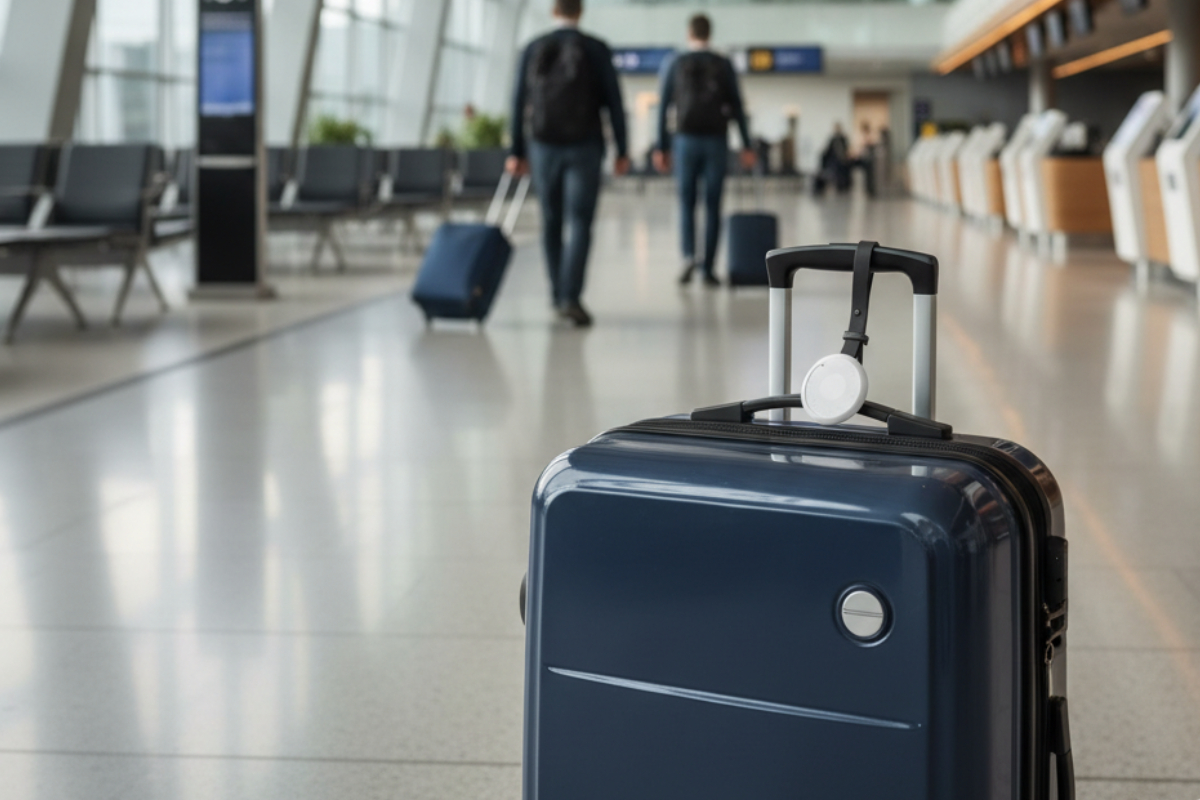Apple AirTags to track luggage make traveling less stressful by letting you locate your bags in real time. These small, smart devices connect with your iPhone, giving you peace of mind whether you’re boarding a flight or exploring a new city. For travelers who frequently juggle multiple trips or carry valuable items, having a reliable way to track luggage can make a huge difference. Even seasoned flyers sometimes overlook tools that could save time and frustration. For those curious about other options, check out our top luggage trackers for comparison.
With the convenience of AirTags, it’s easier than ever to stay connected to your belongings. Before diving into detailed instructions, let’s take a quick look at what makes these devices essential and how they can enhance your travel experience.
AirTags for Luggage Tracking Made Easy
Using AirTags to monitor your bags brings several immediate benefits. They not only provide location updates but also help prevent the anxiety of lost luggage. Here’s a snapshot of why AirTags are useful:
- Peace of mind with real-time tracking
- Seamless integration with Apple devices
- Compact size fits easily in any luggage
- Alerts for items left behind or misplaced
Even if you’re traveling with multiple bags, AirTags let you monitor each one individually, ensuring that you’re never left wondering where your belongings are. These advantages are especially useful for frequent flyers and anyone who travels with tech gadgets, delicate items, or important documents.
Understanding Apple AirTags and How They Work
AirTags are tiny, circular devices designed to work within Apple’s Find My network. Once attached to your luggage, they communicate securely with your iPhone to display the location of your bag. Each AirTag has a built-in speaker for easy locating and can be personalized with initials or emojis.
Setting up an AirTag is simple. Open your iPhone near the AirTag, follow the on-screen instructions, and assign it a name such as “Suitcase” or “Backpack.” This allows you to track multiple items without confusion. They use low-energy Bluetooth to communicate, so battery life can last over a year before replacement.
How to Attach AirTags to Luggage Securely
To get the most out of your AirTags, placement is key. AirTags can be slipped into interior compartments or attached with holders that clip onto zippers. This ensures they stay secure and protected from damage while still allowing their signals to transmit effectively. Small, organized packing strategies help, which is why using travel packing cubes can also be helpful. Packing cubes not only keep items sorted but also provide a snug space for AirTags, reducing movement and making it easier to locate your luggage in crowded baggage claims.
For more discreet tracking, placing an AirTag in a pocket or lining within the luggage avoids visibility while still functioning efficiently. Travelers often find that a combination of visible and hidden placements works best, especially when traveling internationally or through busy airports.
Choosing the Right Luggage for AirTag Tracking
While AirTags can work with almost any bag, certain luggage types make tracking easier. Compact carry-ons are ideal, as their smaller size keeps the AirTag closer to your device for stronger signal reception. For travelers wondering which bags are reliable, our carry-on luggage options list highlights smartly designed bags that pair perfectly with AirTags. Hard-shell suitcases offer extra protection for the AirTag itself, while soft-sided luggage provides flexibility for concealing the tracker inside.
It’s also important to consider weight distribution and storage compartments. Strategically placing AirTags in sections that won’t be jostled excessively ensures the device remains functional and intact throughout the journey.
Common Tips and Best Practices for Luggage Tracking
To ensure that AirTags function optimally, a few practical tips are worth noting. Regularly check the AirTag’s battery status, update your iPhone’s software, and ensure that notifications are enabled. If you’re traveling with multiple AirTags, giving each one a descriptive label helps prevent confusion.
Short anecdotes from frequent travelers show that pairing AirTags with organized packing makes all the difference. One traveler shared that using an AirTag tucked inside a packing cube saved them from missing a crucial connection when their bag was delayed. Simple practices like keeping AirTags away from metal surfaces that can interfere with signals also improve accuracy.
Troubleshooting Luggage Tracking Issues
Occasionally, your AirTag might not update in real time. This can happen in areas with weak cellular coverage or when your iPhone is out of range. In such cases, the Find My network can rely on nearby Apple devices to update your luggage’s location. Rebooting your device or resetting the AirTag can resolve minor glitches. Remember, AirTags are designed to work best within Apple’s ecosystem, so maintaining updated devices ensures a smooth experience.
Protecting Your Privacy While Using AirTags
Apple AirTags include privacy protections, but it’s always wise to be cautious. Only use them on your personal items and check that alerts about unknown AirTags are enabled on your iPhone. This prevents unauthorized tracking and ensures your device is used safely for its intended purpose. By staying mindful of these features, you can enjoy the convenience of AirTags without compromising security.
Simplifying Travel with Apple AirTags to Track Luggage
Using Apple AirTags to track luggage transforms travel from stressful to manageable. By understanding how to set up, place, and monitor these devices, travelers can significantly reduce worries about lost or delayed bags. Whether you’re a frequent flyer, occasional vacationer, or someone traveling with delicate items, AirTags provide a reliable way to keep your luggage under your watchful eye. Combining AirTags with organized packing, smart luggage choices, and awareness of privacy features ensures a smooth and worry-free travel experience.
Investing in AirTags is not just about convenience. It’s about reclaiming peace of mind while on the move. With these tools, you can focus on enjoying your destination rather than stressing over missing bags.










